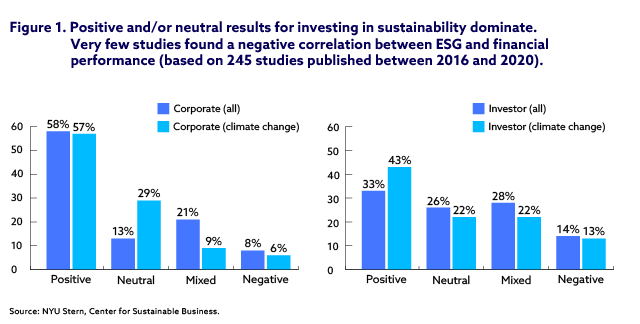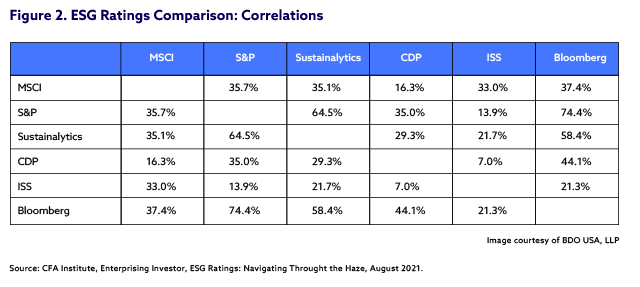CFA Institute
The Role and Rise of ESG Ratings
Overview
Scoring companies on their environmental, social, and governance performance is increasingly common investment practice. How does the practice work, why is it so important now, and what issues does it raise?
The use of ESG ratings and scores in the investment industry has grown rapidly in the past decade or so, amid growing scrutiny of corporate environmental, social and governance performance, and of sustainability-related claims. The ESG rating sector is thus gaining influence, with projections that USD33.9 trillion of global assets under management will consider ESG factors by 2026. As the sources and volume of ESG data multiply – and its reliability becomes more critical – regulators are responding by drafting rules to improve transparency in this area.
This article outlines the purpose of ESG scores and ratings, who uses them, who calculates them (and how), the challenges they present, and how investors and other stakeholders are addressing these issues.
What Are ESG Scores and Ratings Designed To Do?
ESG scores and ratings are terms used interchangeably, the main difference being that the former is a numerical value (typically 1 to 10, or 1 to 100) and the latter a letter-based grade. Both aim to assess companies’ performance in respect of environmental, social, and governance factors. A company will typically receive an overall ESG rating or score as well as more granular ones for different categories.
These ratings are predicated on the notion that companies with better scores will exhibit better financial performance over time because they face lower ESG risks, are more adept at managing them, or some combination thereof, as a CFA Institute blog suggests. While that is a contentious subject for some investors, academic research tends to suggest that sustainability-focused investment improves returns over the long term (See Figure 1).

Who Uses ESG Scores and Ratings, and Why?
Institutional investors – and asset managers acting on their behalf – use ESG ratings and scores to help them make allocation decisions aligned with their values, risk management goals, and long-term performance objectives.
Other financial institutions, such as banks and insurers, also consider these metrics. The former typically do so as part of their risk assessment process when making loans, and the latter to understand better their corporate policyholders' operational management and risk profiles.
Some lenders may offer companies lower interest rates on financing in return for improved ESG performance – and similar benefits may be available in the bond market, through green, social or sustainability-linked debt.
How Are ESG Scores and Ratings Calculated?
ESG ratings can be calculated based on quantitative data (based on public information issued by the company) and/or qualitative assessments by analysts. The data is typically assigned to various categories and a separate score produced for performance in each of the three categories, and then overall for the company.
Who Produces ESG Scores and Ratings?
The biggest providers tend to be well-established credit rating, index or analytics companies. The number of services on offer has ballooned in what has so far been an unregulated market, but that is set to change with the introduction of regulatory requirements in markets like the EU and UK. These efforts broadly aim to improve the reliability of ESG data and transparency of how it is produced.
What Are the Perceived Issues Around ESG Scores and Ratings?
Various concerns have emerged over the practice of ESG scoring, including:
- there can be over-reliance on ESG ratings as green or sustainability credentials, when they actually tend to focus on how companies manage their internal processes, rather than on the real-world impacts of those companies’ products and services;
- the weight given to various individual ESG factors can lead to wide variations between the scores and ratings from different ESG data providers (see Figure 2), making it hard to compare them directly across individual companies or between sectors;
- the availability of data may lead to inherent biases in the scores, with larger companies tending to score better than smaller companies, especially in emerging markets; and
- there may be conflicts of interest for index providers that sell ESG rating services, with research showing that raters with strong index licensing incentives issue higher ESG ratings for firms with better stock return performance and those added to their ESG indexes, compared to raters with weaker licensing incentives.

Does it Matter That ESG Rating Methodologies Vary Widely?
How Are Investors Addressing ESG Scoring Issues?
Investors are pushing for more consistent and reliable data from companies, in line with regulatory efforts to drive improvements on this front. Meanwhile, many investors are making their own assessment of companies’ ESG performance rather than relying on external providers. This may include utilizing advanced technologies such as AI to improve ESG data collection and analysis.


